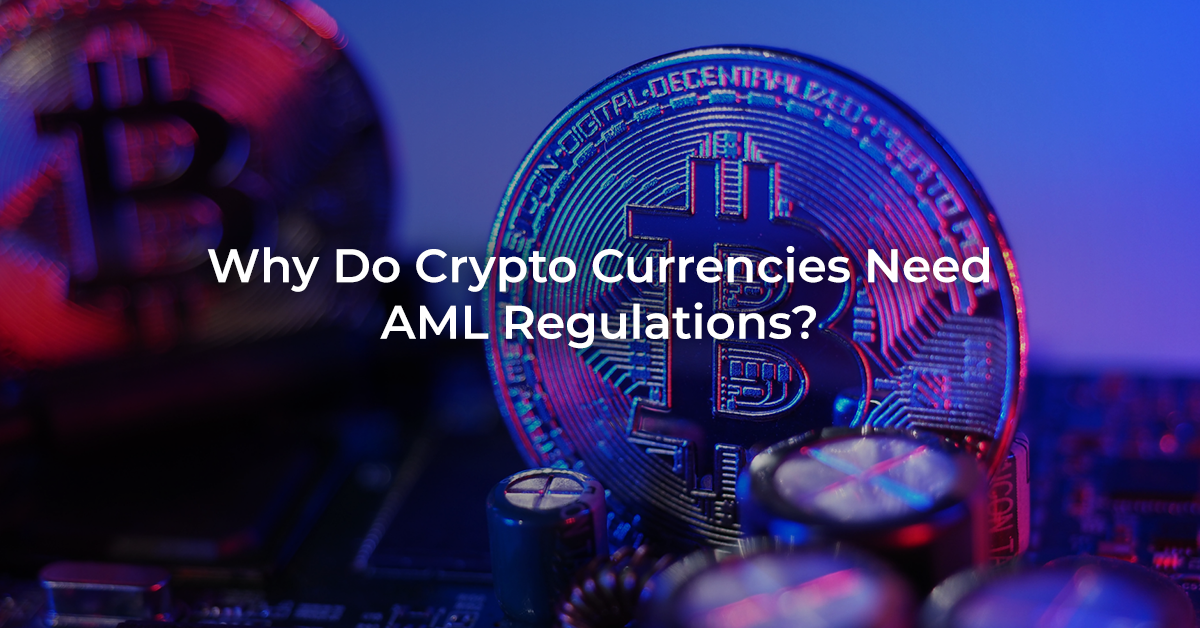
Why Do Crypto Currencies Need AML (Anti-Money Laundering) Regulations?
Worth of crypto and its use for money laundering
The number of cryptocurrencies that are actively exchanged is approximately 20,000 and it gets bigger each day as new cryptocurrencies continue to pop up in the market. The highest total value of all the cryptocurrencies hit $2.9 trillion at the end of 2021. As there has been a downward trend in the world of crypto starting from April 2022, the total value went down to $970 million in June 2022.
There is one simple and obvious goal of the cyber criminals that prefer to misuse the cryptocurrency trading and that is to preserve their unlawfully gained funds from the governmental controls and then convert them into cash. The “2022 Crypto Crime Report” prepared by the blockchain analysis company Chainalysis, states that in 2021, the total amount of money laundered via cryptocurrency trading was $8.6 billion with an increase of 30% in comparison to 2020. The total amount of money laundered via cryptocurrency exchanges since 2017 is $33 billion.
What does AML in crypto mean?
Anti-money laundering (AML) in the world of cryptocurrencies covers all the regulations, policies and guidelines that aim to bring a halt to the criminals who seek to exchange their illicitly gained cryptocurrency funds with cash.
Financial Action Task Force (FATF) prepared a report in 2014 about the possible risks that the cryptocurrencies pose in regarding to the money laundering and financing terrorism called “Virtual Currencies Key Definitions and Potential AML/CFT Risks”. The three main highlights of the report are as follows:
1. Openness to anonymity:
In comparison to the other digital or non-cash payment methods which are generally conducted via a centralized financial entity and require an identification of the user at some point, virtual currency transactions are more open to the anonymity of the user. In cryptocurrency trading online, there is no condition to identify the users face-to-face and it is possible to exchange funds anonymously.
2. Global and segmented reach:
The cross-border reach of the virtual currencies aggravates the AML and CTF risks that they carry because the decentralized and complex nature of the system requires complex infrastructures that might contain different entities from different states all around the world. This means there is a segmentation of the services without a certain jurisdiction to apply to which consequently obstructs the monitoring and supervising.
3. No central supervision:
As the decentralized cryptocurrency trading allows for anonymous, totally digital transactions, it is not possible for a specific country to impose the AML/CTF laws on them.
Upon publishing this report, the European Commission, FinCEN and other regulatory bodies took action and adopted the AML recommendations of the FATF for the visual currencies. After that, the cryptocurrency exchanges, stablecoin issuers and the virtual asset service providers (VASPs) are put under the obligation. The Know-Your-Customer (KYC) controls are applied and the transactions are monitored by the VASP compliance officers in order to detect, prevent and act upon the suspicious activities that might be related to money laundering or financing of terrorism.
What is a KYC process in crypto?
According to a study conducted by Coinfirm, among the 216 virtual asset exchanges they examined, 149 of them (69%) remained insufficient in achieving transparency and completeness in KYC procedures.
In order to mitigate the risk of money laundering via cryptocurrency trade, the initial customer due diligence stage of the AML processes, which is the KYC (Know-Your-Customer) procedures need to be applied to the crypto transactions and wallets. By implementing an effective AML program that involves all the crucial steps of the KYC procedures which are identification of the customer, ongoing monitoring and risk assessment, it would be possible to both prevent the financial crimes and remain compliant with the regulations.
In the EU, there are different laws for the exchanges from crypto-to-crypto and from fiat to crypto currencies. Basically, if a user wants to exchange a fund from fiat currency to crypto, the KYC procedures must be fulfilled. However, if the exchange is among crypto currencies, there is no need for the KYC. In the USA, all the transactions that involve cryptocurrencies must go through the KYC processes.
How Do Crypto Exchanges Ensure AML Compliance?
The common best practices to ensure a successful AML compliance are valid for the crypto exchanges as well: a comprehensive KYC checklist, a risk-based approach and a thorough risk assessment system. As most of the methods of the money laundering also remain similar in the traditional and crypto-based transactions such as money muling, the feature of anonymity in the virtual currencies is the most concerning method used by the criminals.
The crypto companies need to incorporate the technology-driven solutions that best fit their needs. As it is possible to do this by either building an in-house solution or outsourcing, the latter option makes more sense to the majority of the firms as the automation is crucial in order to maintain a compliance and growing business. Additionally, customer onboarding, ID verification, screening and monitoring, transaction risk assessment and management are the important steps that require specific expertise. The risks that might occur in the case of not implementing an automated system for the screening and monitoring purposes include but are not limited to inadequate data for due diligence in customer onboarding, big amounts of alerts that require manual intervention and finally faults in the system that lead to non-compliance to AML regulations.
Tuncay Çoruh, Product Development Director
